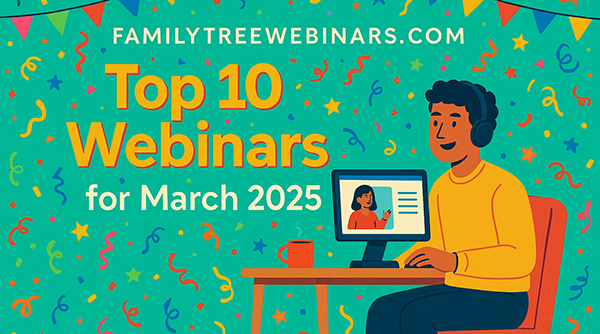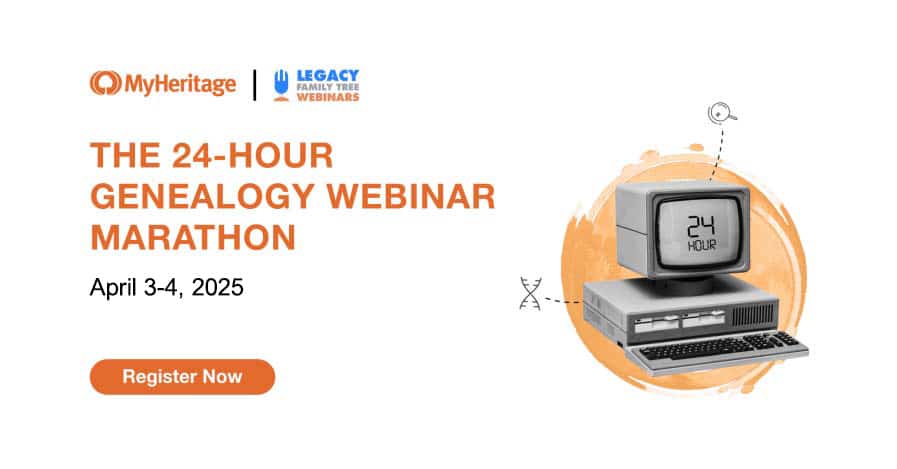Tuesday's Tips provide brief how-to's to help you learn to use the Legacy Family Tree software with new tricks and techniques.
FamilySearch Source Citations (Intermediate)
In "The Abstract Trap" I explained a source citation principle that is very important to understand. I want to expand on that principle using an example from Legacy and FamilySearch because we get a lot of questions about this. If you are not familiar with how to use the FamilySearch interface from within Legacy, HERE are some instructions.
When you use the Import Tree feature you will see that there is an option to add source citations to the imported data.
Some of our users mistakenly think that all of the source citations attached on FamilySearch will be downloaded to Legacy and this is not the case. Here is an example of what you will see as a source:
The Church of Jesus Christ of Latter-day Saints, "FamilySearch Family Tree," database, FamilySearch (http://www.familysearch.org : accessed 8 Dec 2017), entry for Archibald Patrick Graham, person ID KCLX-ZJD.
This citation is correct because your source is the FamilySearch Family Tree, not the sources that have been attached to this person on FamilySearch. You can't cite those specific sources unless you viewed and analyzed them yourself.
If you are working on the Legacy FamilySearch interface screen you will see that there is a Sources tab. Here you can see specific sources attached to that person and you can transfer those sources.
If you move a source from right to left you will be asked which fields you want to assign that source to. Your source citation will look like this:
The Church of Jesus Christ of Latter-day Saints, "FamilySearch Family Tree," database, FamilySearch (http://www.familysearch.org : accessed 8 Dec 2017), entry for Archibald Patrick Graham, person ID KCLX-ZJD; citing Cemetery – MS – Lamar – Grantham Family Cemetery.
Again, you are citing FamilySearch's Family Tree. However, this time the citation is appended with the information you need to be able to track down the source yourself. Once you do you can then craft a citation that reflects that original source. This is the same technique I used in "The Abstract Trap."
A little side note—FamilySearch will only allow you to "tag" a source to the Name, Gender, Birth, Christening, Death, and/or Burial fields. This is a FamilySearch rule and not a Legacy rule. Also, FamilySearch does not allow sources to be tagged/attached to custom events; however, there is a way you can add a source to the custom events that you move from Legacy to FamilySearch (you can also do this on the FamilySearch website directly). You simply copy and paste the source into the "Reason this information is correct" box. This will not only show other researchers on FamilySearch what your source is for that specific event but it will also display in the event box itself instead of at the bottom with the list of tagged sources. The developers have added a new feature so that you can see the "Reason this information is correct" box on the FamilySearch side when you move a source from right to left AND your source will be appended with this information as well as the contributor information. We still need put this new feature through beta testing but you should see it in the next update to Legacy.
You never want to cite something that you didn't personally view and analyze. Legacy and FamilySearch have a built in algorithm to help you cite your sources properly.
Find tech tips every day in the Facebook Legacy User Group. The group is free and is available to anyone with a Facebook account.
For video tech tips check out the Legacy Quick Tips page. These short videos will make it easy for you to learn all sort of fun and interesting ways to look at your genealogy research.
Michele Simmons Lewis, CG® is part of the Legacy Family Tree team at MyHeritage. She handles the enhancement suggestions that come in from our users as well as writing for Legacy News. You can usually find her hanging out on the Legacy User Group Facebook page answering questions and posting tips.



Robert,
It is true that the FamilySearch has pulled documents because of contract changes with the supplier (repository) of those documents. That is why it is important that you create a complete citation so that even if the document is removed your reader will have enough information to be able to track down the document at the repository. I also highly recommend that you download the document while you can so that you have a hard copy to refer back to. FamilySearch had the Louisiana death certificates online but then pulled them. I had downloaded at least 30 before they did 🙂